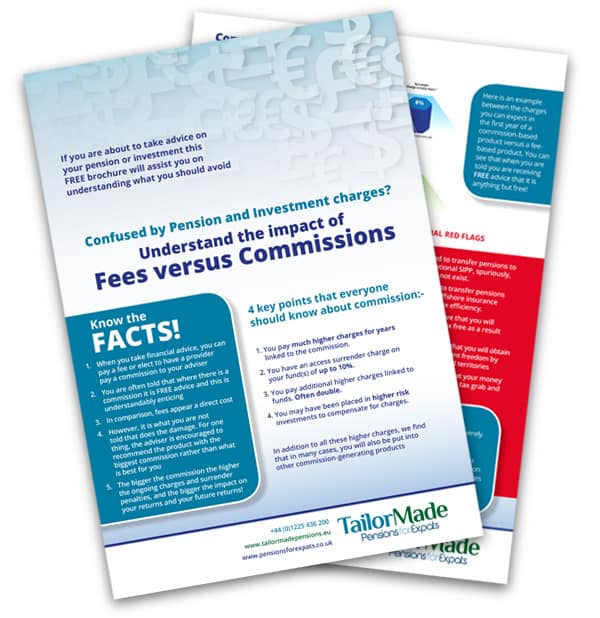
Image by Freepik
Risk tolerance is a personal emotional state based on individual factors
‘Risk tolerance’ is combined with ‘risk capacity’ to create an investor’s ‘risk profile’.
Good financial advisors know that the financial plan they propose must fund the investor’s goals, while carrying a level of risk they can comfortably live with for the long term. Risk, in this case, is the potential for investments to lose value.
Investors’ Risk Tolerance
Financial markets are built on the premise that investments offering larger potential gains are also the ones that have more risk of losing money.
Conversely, investments with little or no chance of losing money have lower expected gains.
Financial advisors try to identify their client’s level of risk tolerance, often by giving them a quiz or questionnaire designed to determine how financially adventurous they are. Most often, this is portrayed as where they lie on the spectrum of low-to-high risk takers.
Looked at another way, risk tolerance can be measured as the amount of loss an investor is willing to take before selling an investment.
For example, an investor with low risk tolerance may only be willing to lose $100 on an investment before selling. Alternately, an investor with high risk tolerance may be willing to lose $500 in the hope of the investment turning around and making more, later.
Risk Tolerance is Not Static
Investors must also recognize that risk tolerance can change depending on market and economic conditions or circumstances specific to a person’s life, among other factors.
The best way to get an accurate risk tolerance level is to assess it in, or shortly after, a difficult down market, such as we’ve seen in 2022, according to Joel Larsen, principal at Navion Financial Advisors in Sacramento, California.
“Assessments made when everything is coming up roses will default to be optimistic,” he says.
Risk Tolerance vs Risk Capacity
Risk capacity, on the other hand, refers to the amount of risk – aka ‘loss’ – an investor can absorb without jeopardizing their financial goals. It’s how much they can afford to lose.
To look at it another way, risk capacity is the amount of risk that the investor “must” take to reach their financial goals.
Sometimes, the financial advisor must demonstrate that the kinds of investments needed to reach the investor’s goals are incongruent with their risk tolerance level.
Or, alternately, that an investor’s risk tolerance is high – higher than their financial capacity to take on that amount of risk.
A Unique Approach to Risk Tolerance
Chris Lean, Investment Director, Aisa International summarizes their firm’s observations over decades of portfolio management. “We found that, in practice, client psychology is entirely risk averse, meaning that clients feel greater pain with losses, even when previous gains outweigh those losses.”
Based on this experience, Aisa International builds individual portfolios using five key principles:
- Attitude to risk is not a number or category on a chart. Instead, it must be a definition that a client can buy into.
- The key measurement is ‘capacity for loss’ and/or ‘risk aversion,’ rather than gains.
- Portfolios must be linked to measurements of risk and volatility, rather than targeting returns in short time periods.
- Portfolios must be biased in content toward the geographic location of the client.
- Successfully performing ‘due diligence’ means that the active fund managers must meet certain criteria.
Factors That Affect a Risk Profile
There are a number of things that affect the risk profile – both the risk tolerance and the risk capacity – of every investor. These include goals, time, age, cash requirements, and portfolio size.
Investment Goals
Financial goals differ among individuals. For many, accumulating the most money possible is not the sole purpose of their financial plan. In this case, the investor has specific goals in mind they are working to pay for. Goals may be to leave an inheritance of a certain amount or buy a sailboat and sail around the world. Every person is different.
The financial advisor will calculate the amount required to achieve their specific goals and design an investment strategy accordingly.
Timeline
Each investor will adopt a different time horizon based on their investment plans. Generally, the more time an investor has to meet their goals, the more risk they can take, because they will have more time to make up for any short-term losses they might experience.
This philosophy is based on the fact that the market has shown an upward trend over the years, while having many smaller ups and downs in the short term.
Age
Usually, young investors who are saving for their later years can take on more risks than older individuals. This is because they have the time to make more money working and have more time to handle market fluctuations.
Cash Requirements
If an investor is looking to guarantee they will have the funds they need to cover day-to-day expenses, they are much less comfortable with the risk of losses.
Conversely, if the investor has all their living expenses covered, their risk tolerance, along with their risk capacity, is usually much higher, as they are looking for additional income, not strictly necessary income.
Portfolio Size
As an extension of cash requirements, the size of the portfolio usually factors into the risk profile of the investor. People with large portfolios worth many millions can take on more risk than those with portfolios worth thousands.
What Kinds of Risk Are We Talking About?
There are multiple forces acting on the market, and therefore all the investments in the market, all the time. These are ‘market risks.’
Conversely, company-specific risks are assessed based on how individual companies are managed.
Factors That Affect the Market
The economy and markets where stocks, bonds, and other securities are traded can, and do, fluctuate. Individual investors have no control over these factors. Indeed, all they can do is predict, identify, evaluate, and respond by buying, selling, or staying neutral. Or, hiring a professional to do this for them.
The ‘risks’ are really just common financial factors. They become investment risks because they can fluctuate up or down, which can impact an investment positively or negatively.
Interest Rates
For example, interest rates on borrowed money can rise and fall. Rising interest rates make new loans more expensive to pay off. Hence, fewer people borrow money with high interest rates. Higher interest rates also cause loans made at lower interest rates to become less valuable for the loan holder, in comparison.
Inflation
As is currently the case, inflation eats away at the purchasing power of money. If saved money can’t buy as much in the future, then the lost value equates to lost capital.
Currency
When the value of one currency changes against the value of another, it creates a risk for the investor. This currency risk can act like inflation, because the same amount of money could be worth less when exchanged.
Liquidity
While they may have a valuable asset, when the investor is unable to sell the investment when needed, there is a liquidity risk.
Societal Stability
On a large scale, social unrest or certain political decisions will affect investment markets. Socio-political risk can affect investments during elections, wars, and policy changes, for example.
And, ultimately, the entire market could crash, though unlikely.
Factors That Affect Company-Specific Risk
Company-specific risk is created when poor management decisions negatively affect their company’s performance.
Additionally, if a borrower, such as a bond issuer, does not pay the interest or principal payments on its loans on time they are considered a credit risk.
See also:
The 401(k) Crash: U.S. Retirees Impacted By Unexpected Losses in 2022
A license in the UK and the Investment Licence in the European Union, Aisa International is uniquely qualified to provide personal financial advice for U.K. pensioners living outside of the U.K. Headquartered in Prague, Czech Republic, Aisa International serves its global clients where they reside through its OpesFidelio network of highly-qualified advisors. For more information, please visit www.asiainternational.cz.
The views expressed in this article are not personal advice. You should contact a qualified and ideally regulated, adviser to obtain up-to-date personal advice regarding your own personal circumstances. If you do not, then you are acting under your own authority and deemed “execution only”. The author does not accept any liability for people acting without personalised advice, who base a decision on views expressed in this generic article. This article reflects the legislation current at the time of writing. New legislation is rarely added to existing articles. Please check for later articles or changes in legislation on official government websites.
Related Stories:
- Investing in Bonds 2023
- Diversifying Your Portfolio: 4 Key Strategies
- Retirement Planning Strategies- How Will You Pay Yourself ? Part 2
- Bonds: Say Hello to an Old Friend
- Robots vs Humans: Will AI Replace Financial Advisors?
Share this story



